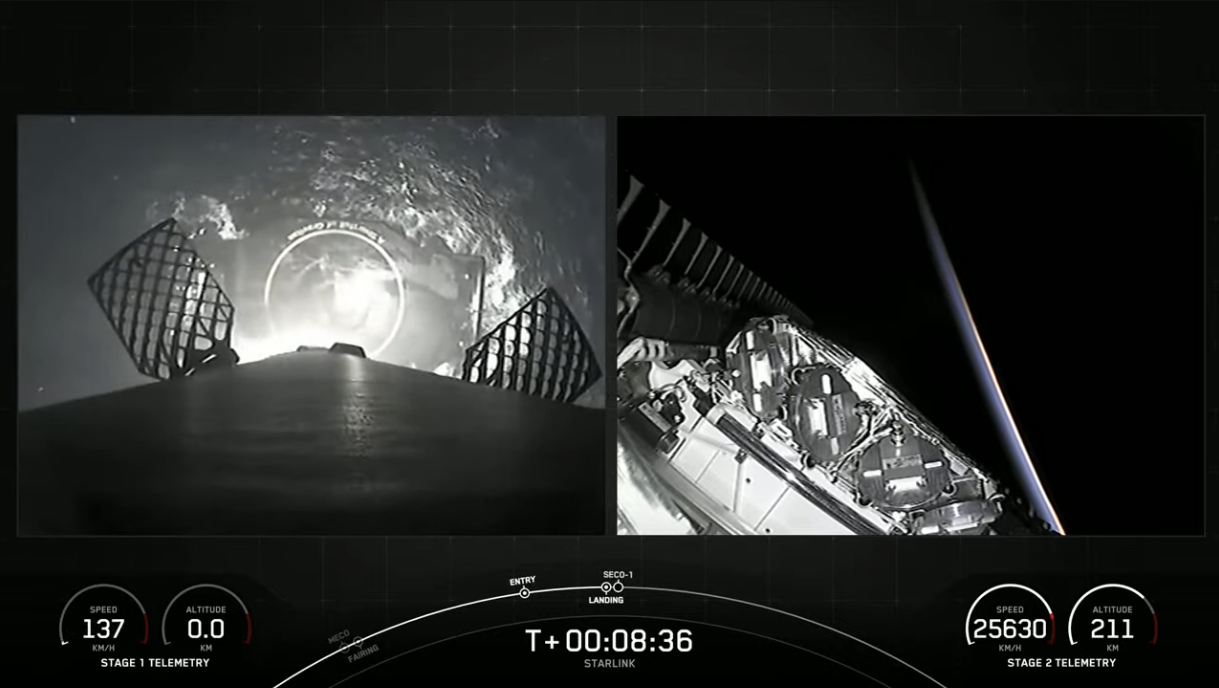
SpaceX has successfully staged its 60th mission of 2022, almost doubling its previous personal-best of 31 launches, achieved at the close of last year. The veteran B1062 core—flying a record-breaking eighth time in a single calendar year—took flight from storied Space Launch Complex (SLC)-40 at Cape Canaveral Space Force Station, Fla., at 4:34 a.m. EST Wednesday, laden with 54 Starlink internet communications satellites, destined for emplacement into low-Earth orbit.
With 3,664 production-design Starlinks having now been launched between May 2019 and this morning—of which more than 300 have failed, decayed from orbit or been intentionally deorbited—today’s launch closes out a banner year, with a total of 1,722 of these flat-packed satellites put into orbit by 34 Falcon 9 missions in 2022 alone.
All told, this has helped facilitate Starlink connectivity across 45 sovereign nations and worldwide markets spanning North and South America, Europe, Asia and Oceania and saw emergency provision furnished to Ukraine in February and the flight of a pair of FIFA World Cup match balls to and from space in October.
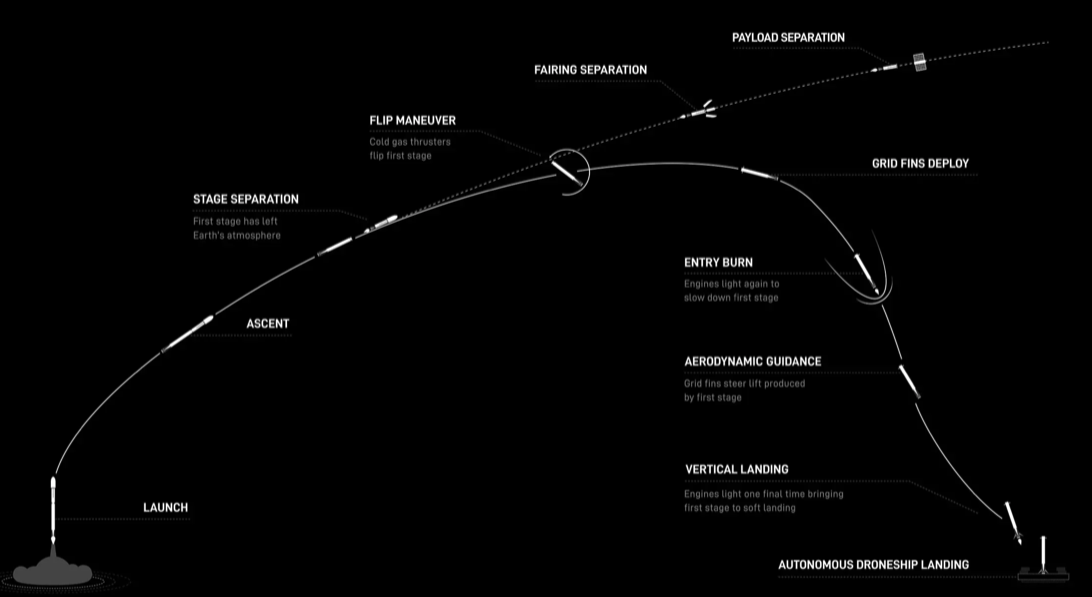
But Wednesday morning’s launch marked a special milestone, as SpaceX delivered its first batch of second-generation Starlinks into a 330-mile-high (530-kilometer) orbit, positioned at the previously unused “slot” of 43 degrees of inclination. It is believed that as many as 3,360 Starlinks in 28 orbital planes—at 120 satellites per plane—will be emplaced at the 43-degree-inclination point over the next few years
“This launch marks the first of Starlink’s upgraded network,” SpaceX noted late Tuesday. “Under our new license, we are now able to deploy satellites to new orbits that will add even more capacity to the network. Ultimately, this enables us to add more customers and provide faster service—particularly in areas that are currently over-subscribed.”
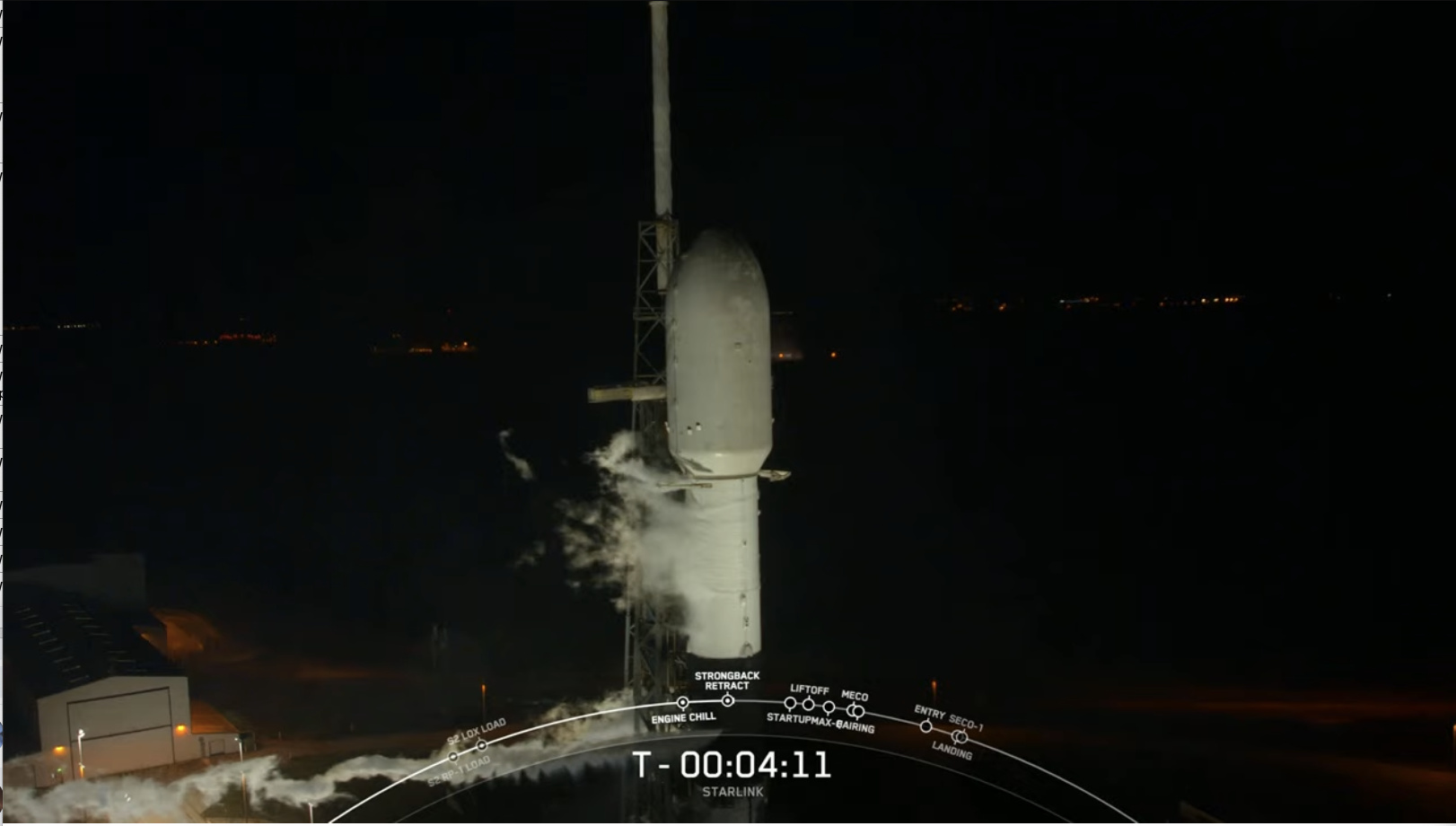
The weather outlook for Wednesday’s opening launch attempt, and a backup opportunity at 4:14 a.m. EST Thursday, proved exceptionally favorable, with a 90-percent probability of acceptable conditions on both pre-dawn mornings. “An upper-level trough, currently situated over the eastern Gulf of Mexico, will cross the state today and lift out across the Atlantic tonight,” noted the 45th Weather Squadron at Patrick Space Force Base in its L-1 update, issued Tuesday afternoon.
“At the surface, another high-pressure system spreads across the Southeast U.S., bringing clearer skies to the region this afternoon and overnight,” the 45th continued. “Favorable local weather is expected for Wednesday and Thursday, with only a very slim threat of low-topped cumulus clouds interfering with the launch opportunities either morning.”
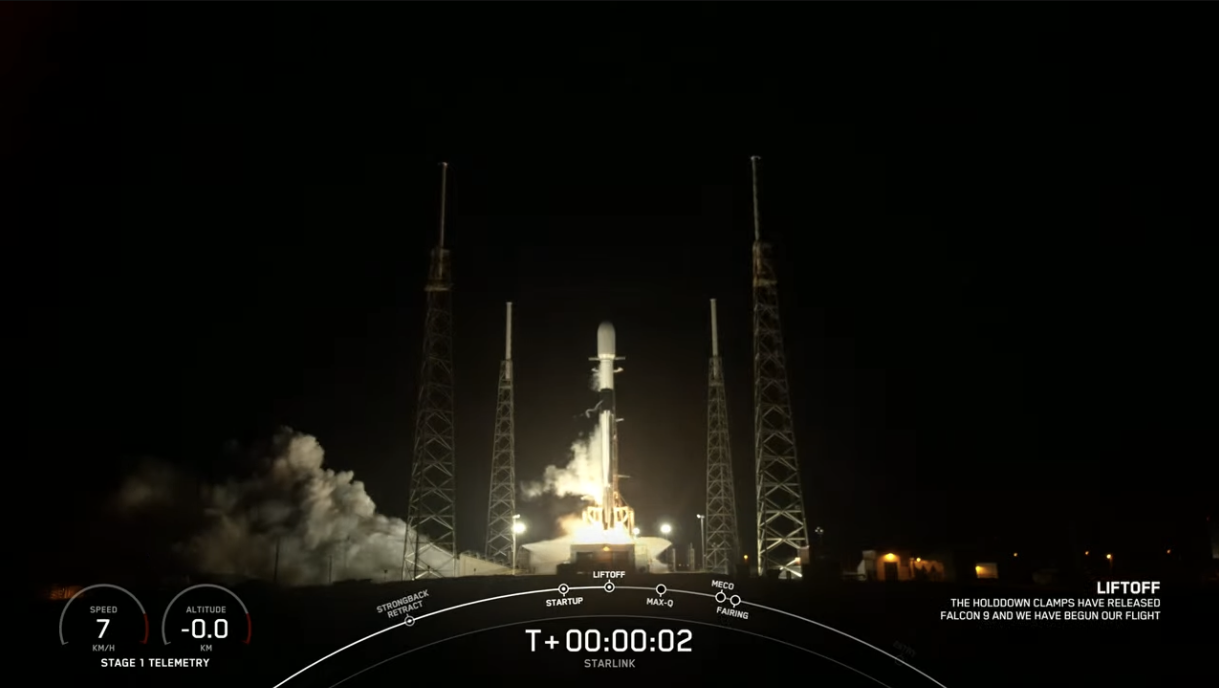
In readiness for Wednesday’s launch, the Autonomous Spaceport Drone Ship (ASDS), “A Shortfall of Gravitas”—which logged its 25th Falcon 9 “catch” earlier in December—put to sea out of Port Canaveral on Christmas Eve, bound for a recovery location some 400 miles (650 kilometers) downrange in the Atlantic Ocean. But conditions in the recovery zone were decidedly more marginal, with SpaceX noting that it was “keeping an eye on weather conditions for booster recovery”.
Flying for an 11th time in a little over two years, B1062 roared into the pre-dawn darkness at 4:34 a.m. EST, instantly transforming night into day and shaking the Space Coast awake with more than 1.5 million pounds (680,000 kilograms) of thrust from its nine Merlin 1D+ engines. Two and a half minutes into the flight, B1062 separated from the stack and commenced a smooth descent, guided by engine burns and hypersonic grid-fins, to alight smoothly on the deck of ASOG.
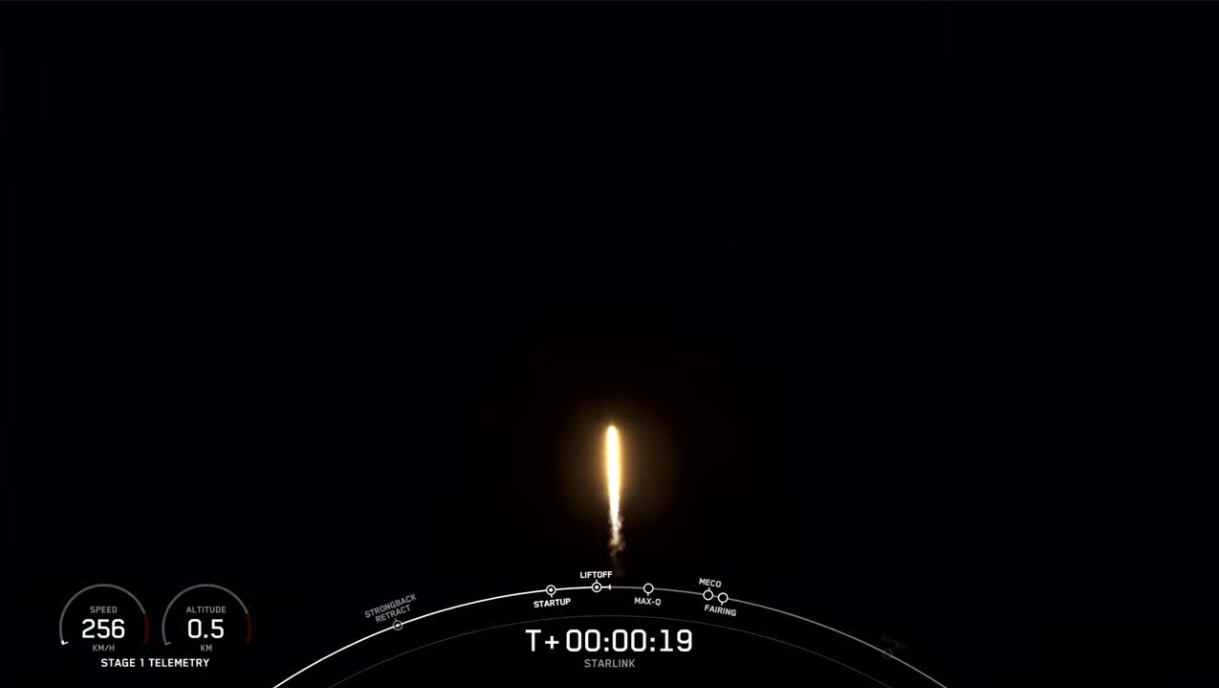
Meanwhile, the Falcon 9’s second stage continued to power uphill, under the impulse of its single Merlin 1D+ Vacuum engine. Its customary six-minute burn wrapped up a little past eight minutes into the mission, after which the Starlink stack of 54 satellites was deployed at 18 minutes after launch.
B1062’s year has been a remarkable one, with a record-setting eight launches and landings already accomplished since January alone. That smartly surpasses the previous record-holder, the many-times-used B1060 core, which completed six launches in 2021.
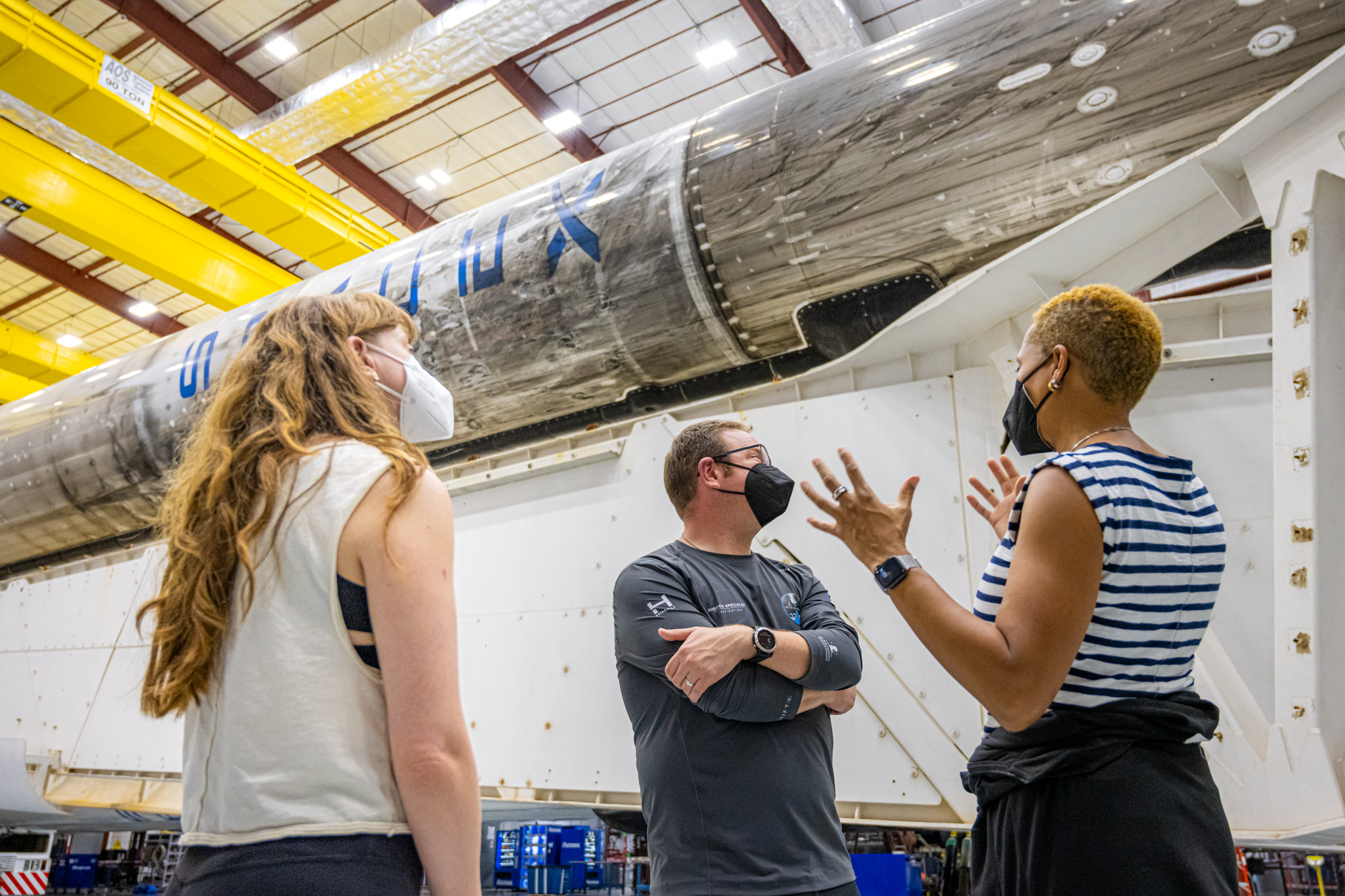
B1062 entered service more than two years ago, back in November 2020, when she ferried the fourth Block III Global Positioning System (GPS) navigation and timing satellite on the first leg of its trek to Medium Earth Orbit (MEO). Following the GPS III-04 launch, she was pressed rapidly back into service, flying twice in 2021—lifting GPS III-05 to orbit in June and the historic, all-civilian Inspiration4 crew of Shift4Payments billionaire Jared “Rook” Isaacman and crewmates Sian Proctor, Hayley Arceneaux and Chris Sembroski aboard Dragon Resilience the following September—before becoming the first Falcon 9 booster to fly this year.
Launched last 6 January, she has now roared skyward eight times in 2022, more than any other Falcon 9 within a single calendar year. Notably, she flew twice in April, establishing a new record of only 21 days between launches by the same orbital-class booster.
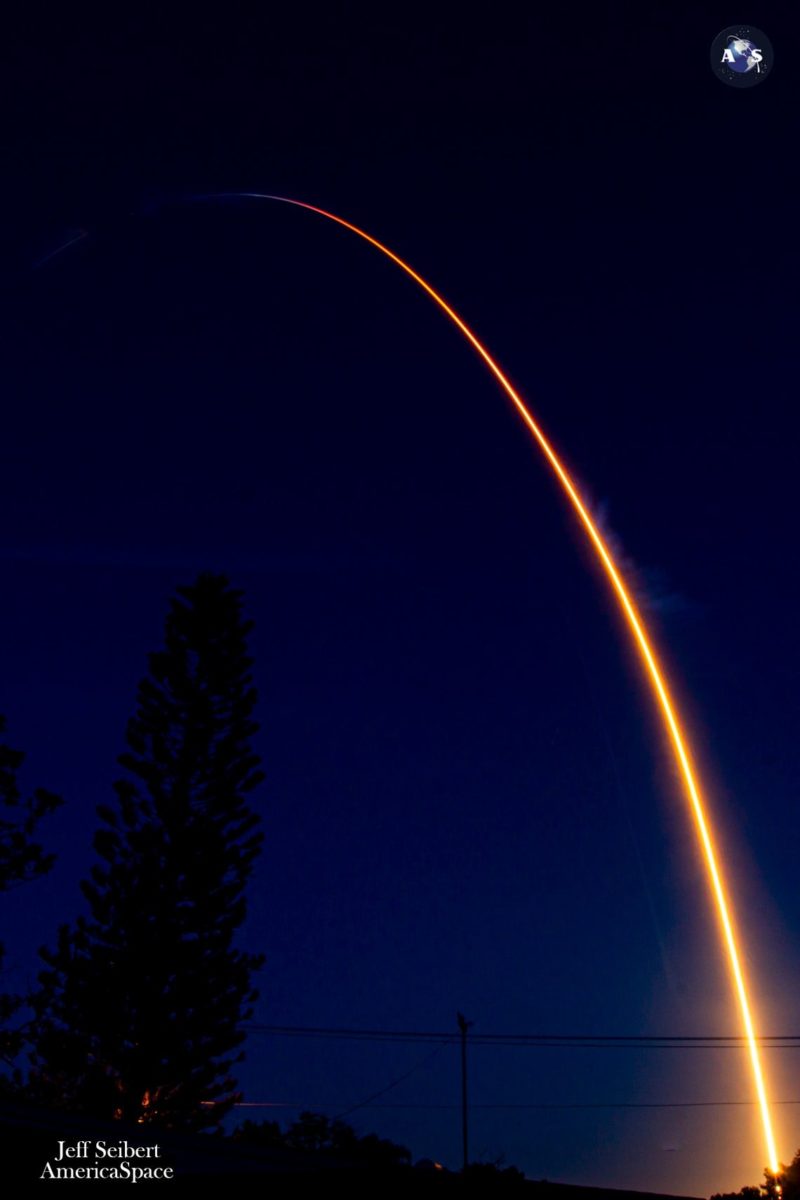
The first of those launches carried Dragon Endeavour and Ax-1 crewmen Mike Lopez-Alegria, Larry Connor, Mark Pathy and Eytan Stibbe on the first leg of their 17-day mission to the sprawling International Space Station (ISS), on behalf of Houston, Texas-headquartered AxiomSpace, Inc.
Most recently flown on 20 October, B1062 has now lifted to orbit eight humans from three sovereign nations, two Block III GPS payloads, over 300 Starlinks and Egypt’s powerful Nilesat-301 geostationary communications satellite. With Wednesday’s flight, she becomes only the fifth Falcon 9 core to launch an 11th time.
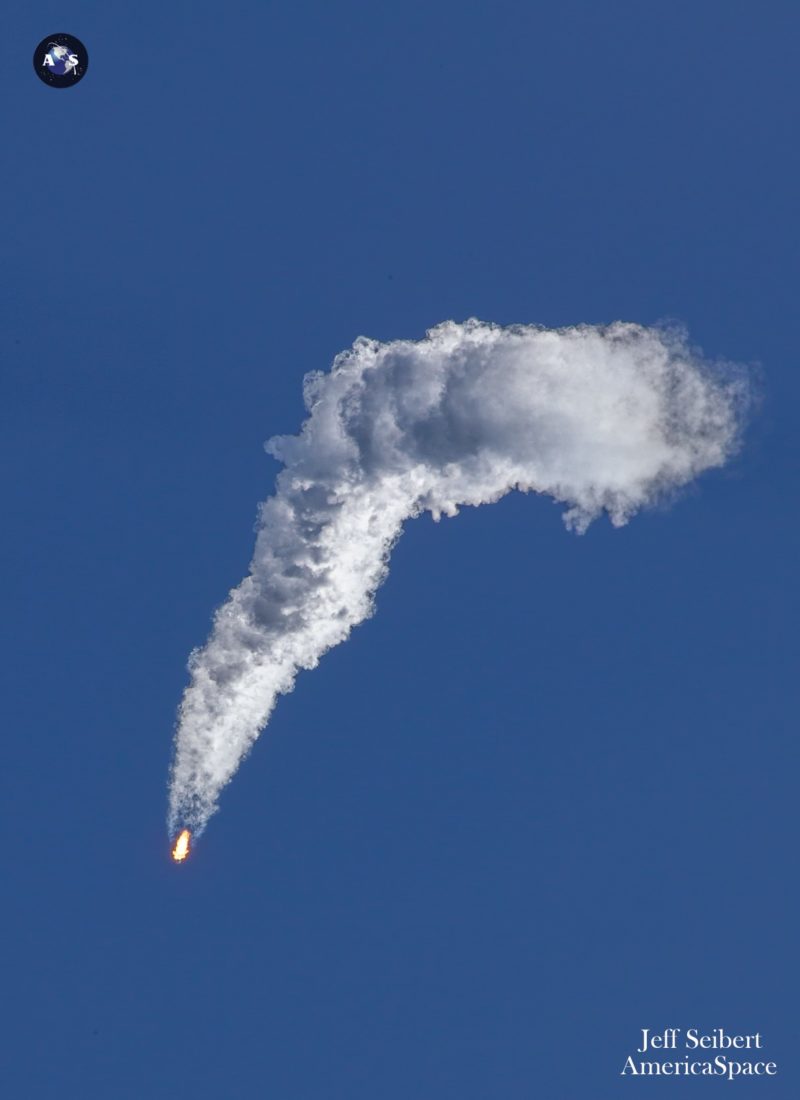
And also with today’s launch, SpaceX has flown an impressive 60 times in 2022, accomplished using only 17 boosters. Twelve flights have been staged out of Vandenberg, doubling SpaceX’s previous annual record of six missions back in 2018. And just last month, after a three-year-plus hiatus, the triple-barreled Falcon Heavy returned to active service, lofting the highly secretive USSF-44 payload for the U.S. Space Force.
For the first time in 2022, Falcon 9 cores logged record-setting 12th, 13th, 14th and 15th launches. Turnaround times between missions by individual boosters have narrowed from 27 days to just 21 days, intervals between flights have narrowed from 15 hours between a pair of launches last December to only six hours between a pair of launches in early October.
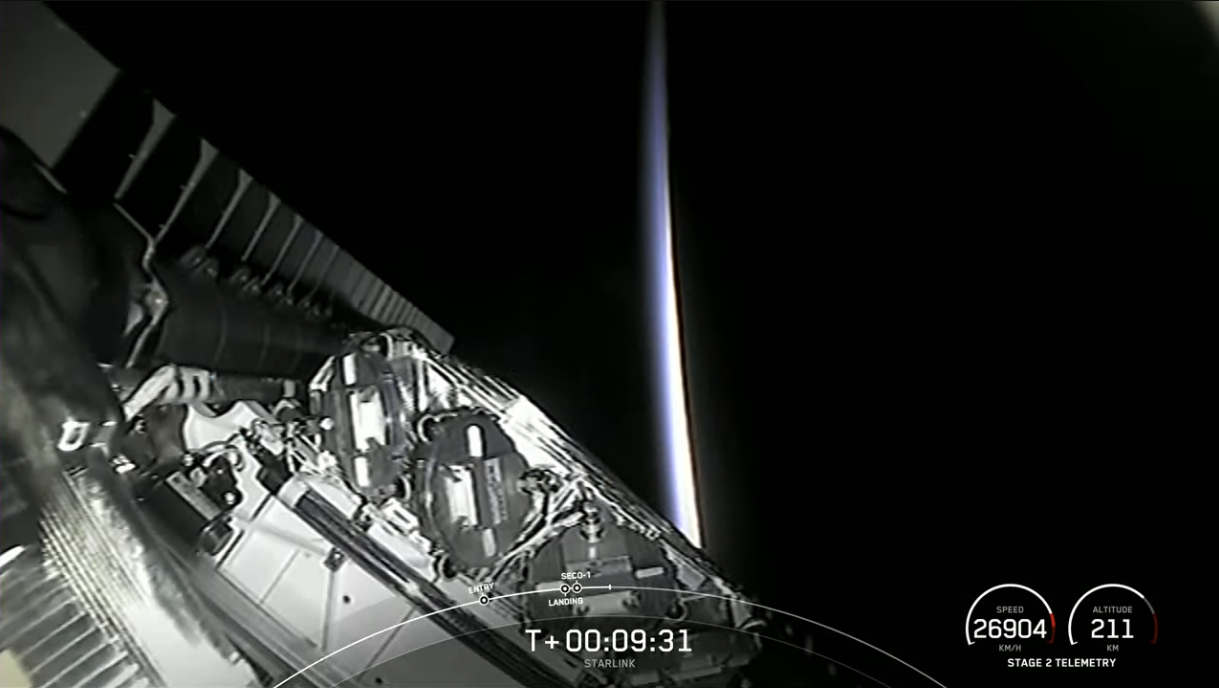
And in April SpaceX scored its first-ever six-launch month, an accomplishment it went on to repeat in July, August, October and December. If a scheduled flight of a Falcon 9 out of Vandenberg—currently targeted as early as Friday, 30 December—launches on time, carrying the EROS-C3 electro-optical reconnaissance satellite for Israel’s Ministry of Defense, 2022 might close with SpaceX’s first seven-launch month.
Looking ahead to the New Year, Elon Musk has made little secret of his intent to fly as many as 100 missions in 2023. Two Commercial Crew missions—Crew-6 in mid-February and Crew-7 in early fall—will deliver U.S., Russian, Danish, Japanese and United Arab Emirates (UAE) crew members to the ISS, with AxiomSpace, Inc., aiming to fly a pair of Crew Dragon visiting missions in late spring and late fall. And three Cargo Dragons in February, June and October will transport equipment, payloads and supplies to the station in support of successive expedition crews.
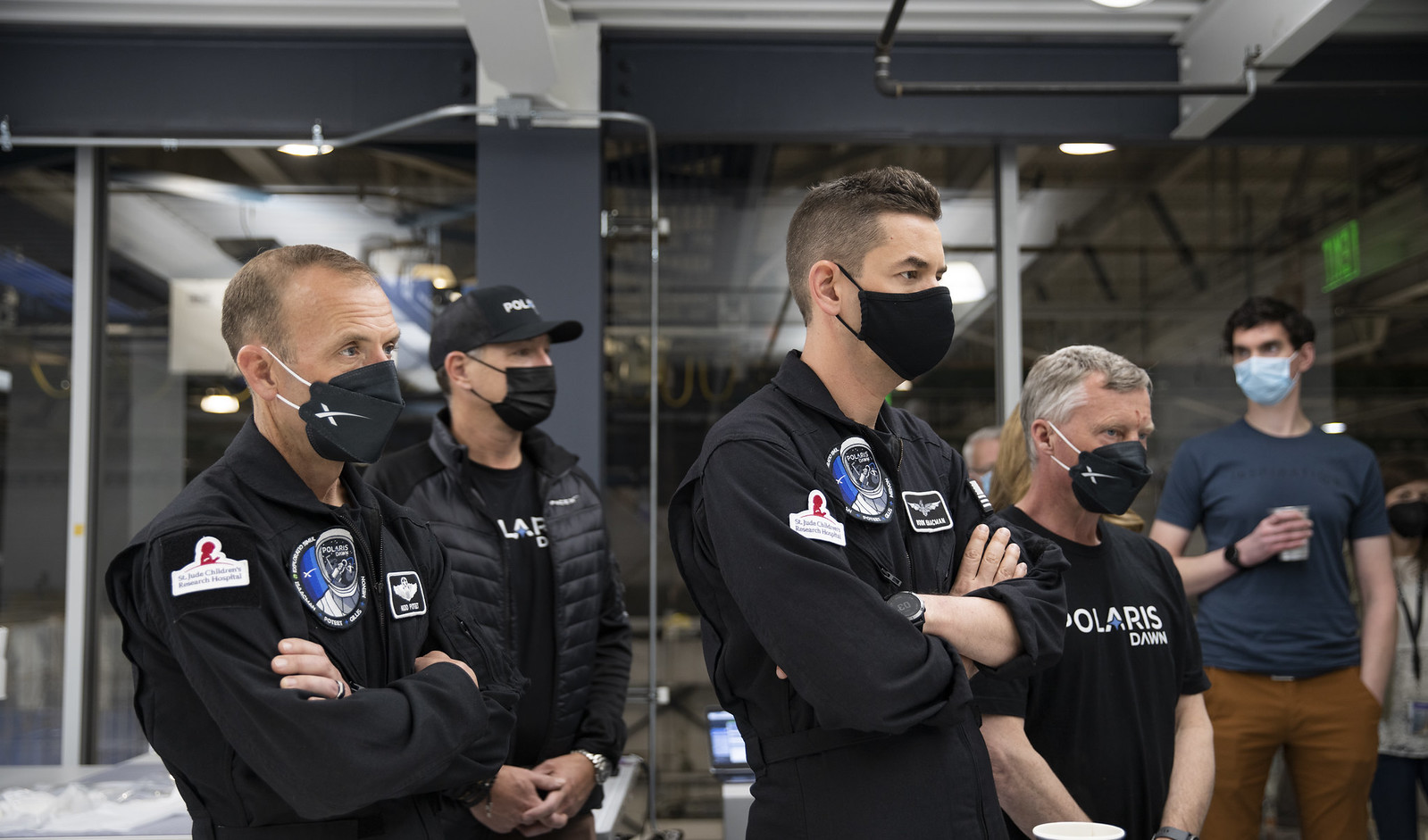
Human spaceflight beyond the ISS is expected to continue with the long-awaited Polaris Dawn mission, tentatively scheduled for March. Its crew will attempt the first-ever commercial Extravehicular Activity (EVA) and the highest altitude ever reached by astronauts on a non-lunar voyage.
Added to that list are up to four Transporter “rideshare” missions, three classified payloads for the U.S. Space Force and one for the National Reconnaissance Office and the inaugural launches of “Tranche 0” of the Transport and Tracking Layer of low-latency, high-capacity connectivity satellites for the Space Development Agency (SDA). The European Space Agency’s (ESA) Euclid near-infrared space telescope and NASA’s Psyche mission to explore the metallic asteroid of the same name will fly late in 2023, with a dozen or more geostationary-bound communications satellites, another Block III GPS and the ever-expanding Starlink constellation also slated for launch spots.





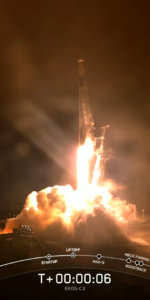
3 Comments
3 Pings & Trackbacks
Pingback:SpaceX Wraps Up Banner 2022, With Year-End Launch of Israeli Spy Satellite - AmericaSpace
Pingback:SpaceX Wraps Up Banner 2022, With Year-End Launch of Israeli Spy Satellite - Space News
Pingback:SpaceX Launches 9x-Flown Falcon 9, First Eight-Mission Month Beckons - AmericaSpace